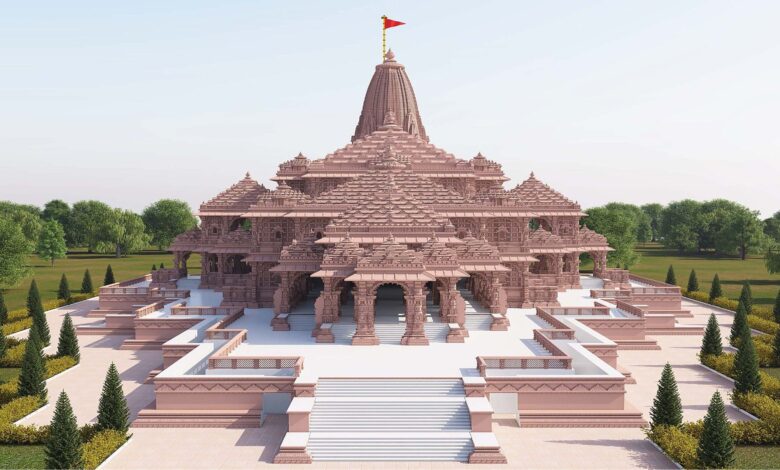
Four years after the Supreme Court authorized the construction of the Ram Temple at Ram Janmabhoomi in Ayodhya, the first phase of the project is nearly completed. The Nagara-style temple was designed by a team led by well-known architect Chandrakant Bhai Sompura and is made mostly of pink sandstone and carved marble from Rajasthan’s Mirzapur and Bansi-Paharpur. Furthermore, 17,000 granite stones weighing 2 tons apiece were employed in its construction.
The temple will not require repairs for at least 1,000 years, according to the trustees, and even a 6.5 magnitude earthquake will not be able disrupt its foundation. Steel and regular cement were not employed in the construction of the temple. The foundation of the temple is likewise 12 meters deep. According to a news article, the soil used to replace the foundation can be transformed into stone in 28 days and a total of 47 layers were poured in the foundation.
“So far, 21 lakh cubic feet of granite, sandstone, and marble have been used in the temple’s construction,” Champat Rai, general secretary of the Shri Ram Janmabhoomi Teerth Kshetra Trust, told the Times of India.
Surprisingly, all of the bricks contributed during and after the 1992 ‘Shila Daan’ were used to build the temple.
Two more phases to go
The head of the construction committee, Nripendra Misra, a former senior secretary to PM Modi, had set a December 15 deadline for finishing the first phase – the bottom level, which houses the sanctum sanctorum.
The second phase, which will contain the first and second floors, all murals and iconography work, the lower pedestal, and engraving on around 360 huge pillars, is scheduled to be finished in December 2024.
The Ram Darbar will be on the first floor, and each pillar will have 25-30 figurines carved on it. Outside the parkota (outside wall), seven temples will be erected next year, including those of Maharishi Valmiki, Nishad, Vishwamitra, and Shabri. The 71-acre property, which includes auditoriums and a parkota with bronze murals and Saptarishi temples, will be finished in the third phase by December 2025.
PM Modi will witness the installation of a Ram idol
The ceremony will take place on January 22. The trust will choose one of three statues of Ram Lalla (5-year-old god) for installation in the sanctum sanctorum in the presence of PM Modi ahead of the ceremony. According to an official, the three idols will stand 51 inches tall and hold a bow and arrow. The public will be able to see the god following the morning of January 27.
Mechanism that reflects sunlight on Ram Lalla’s forehead at 12 noon
Nripendra Misra, head of the Construction Committee, told TOI that the three sculptors of the Ram Lalla statues had been invited to Ayodhya, along with their choice of stone. The stones were tested at the government’s National Institute of Rock Mechanics, which included a white Makrana marble and a greyish stone from Karnataka known as Krishna Shila. The sculptors were only then asked to get to work. Experts believe that the height of each idol should be about 7 feet in order for devotees to get darshan from a distance of 25 feet. Another feature is a mechanism that diverts and reflects sunlight on the idol’s forehead at 12 noon on every Ram Navami. It was created by the Central Building Research Institute in Roorkee
You might also be intersted in – Grand inaugural of the Ayodhya Ram Temple, special gestures by Thailand and RSS



